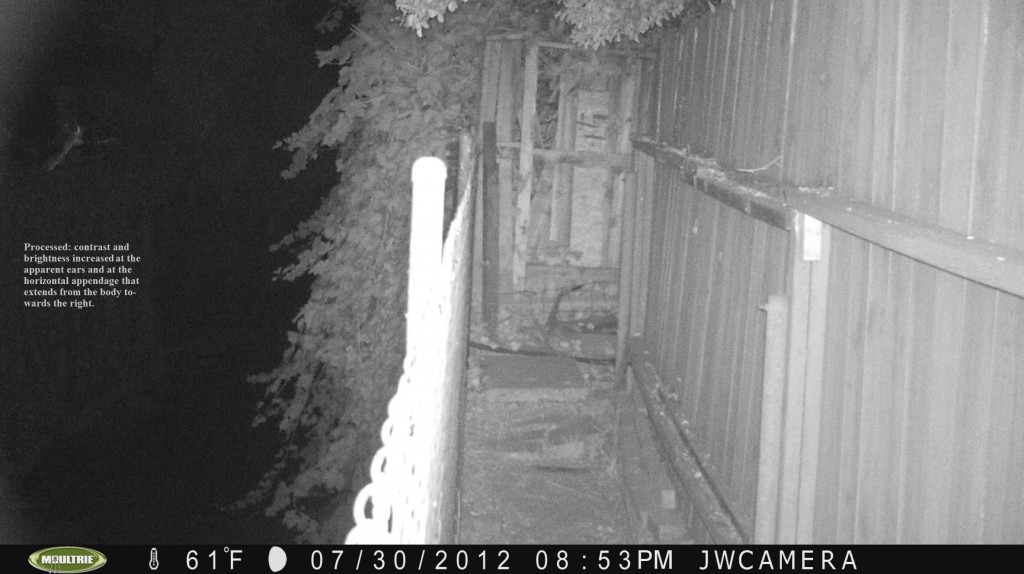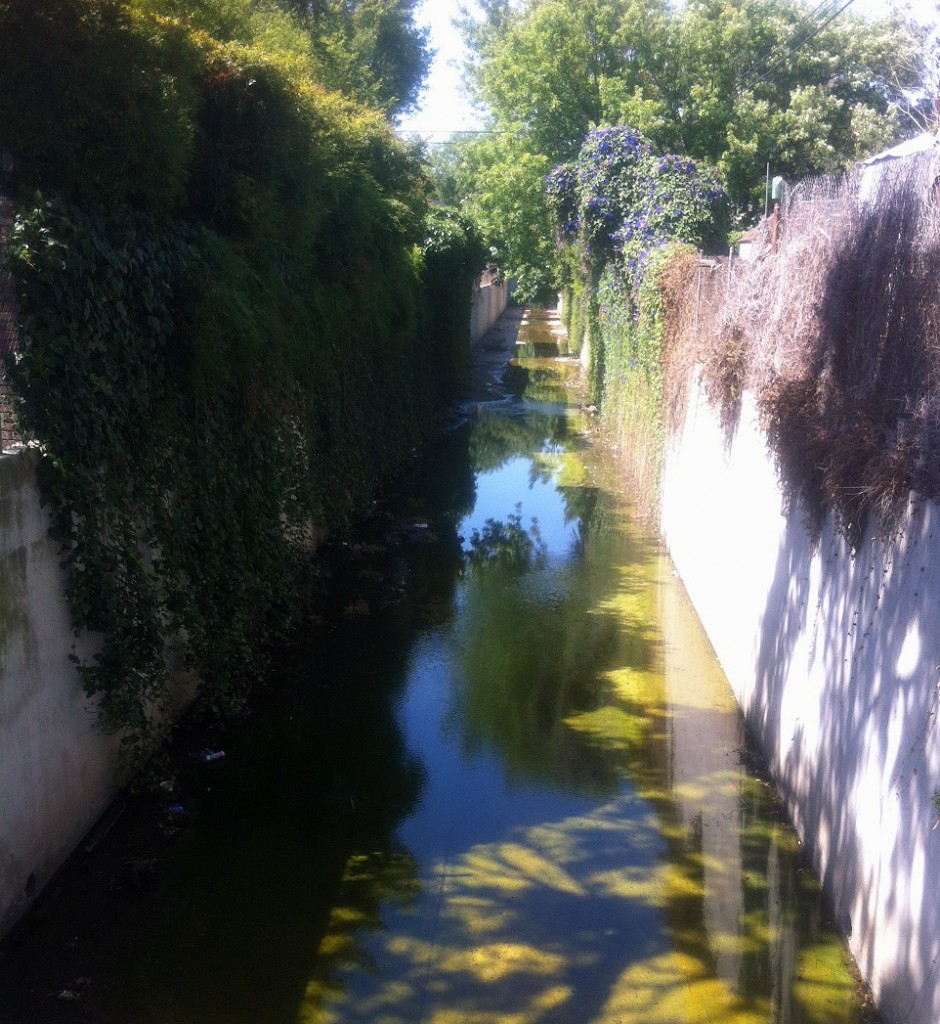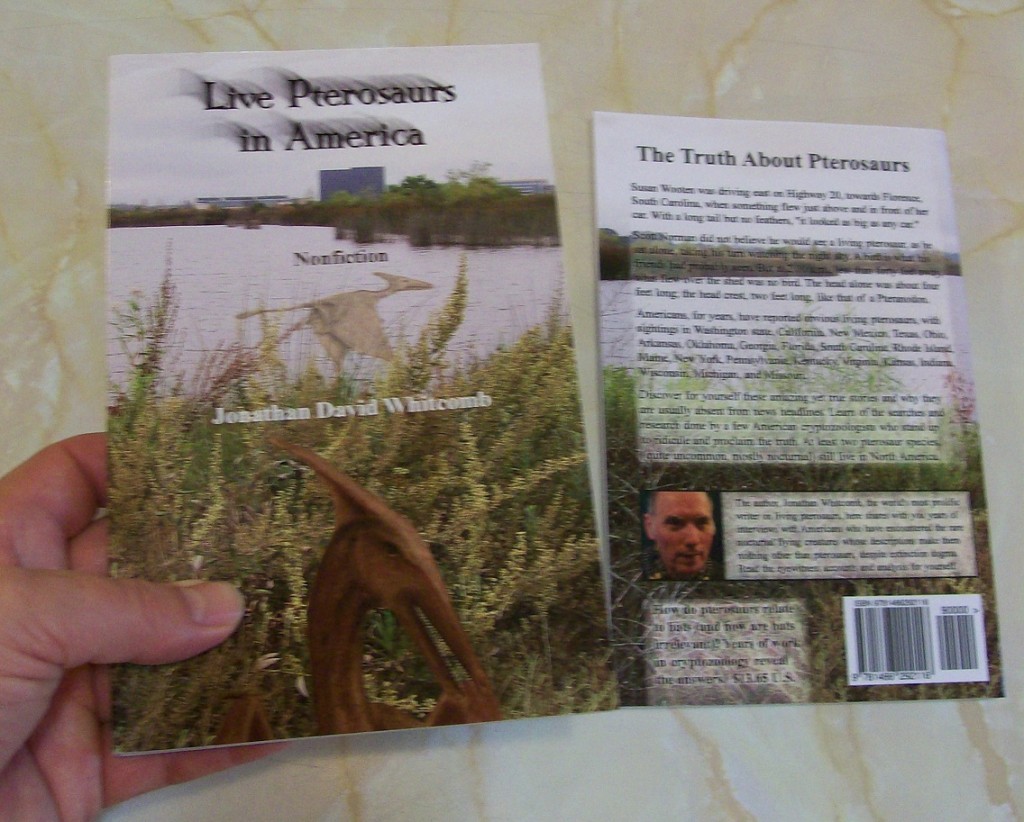Insect-eating bats in Los Angeles County are common. I remember watching them dart over my head, after sunset, when I was a youth in Pasadena, California. I no longer watch for bats at night, although one of the furry little creatures recently seems to have turned up in a photo recorded by my game camera. I now watch for a pterodactyl in Lakewood.
I recently set up a game camera over a storm channel near where an apparent ropen (a modern pterosaur) was seen clearly in daylight. I believe the flying creature is nocturnal, like most ropens. But I have not yet gotten a photo of a ropen. I have seen a number of photos in which a blur is seen flying nearly parallel to the storm channel; at first, I thought they were large insect-eating bats, possibly the Big Brown Bat, but today I noticed that those blurs are part of a cloud of dust raised by the family dog that sometimes runs along the fence where the game camera is set up. Nevertheless, I have found one photo that may show a bat in flight.
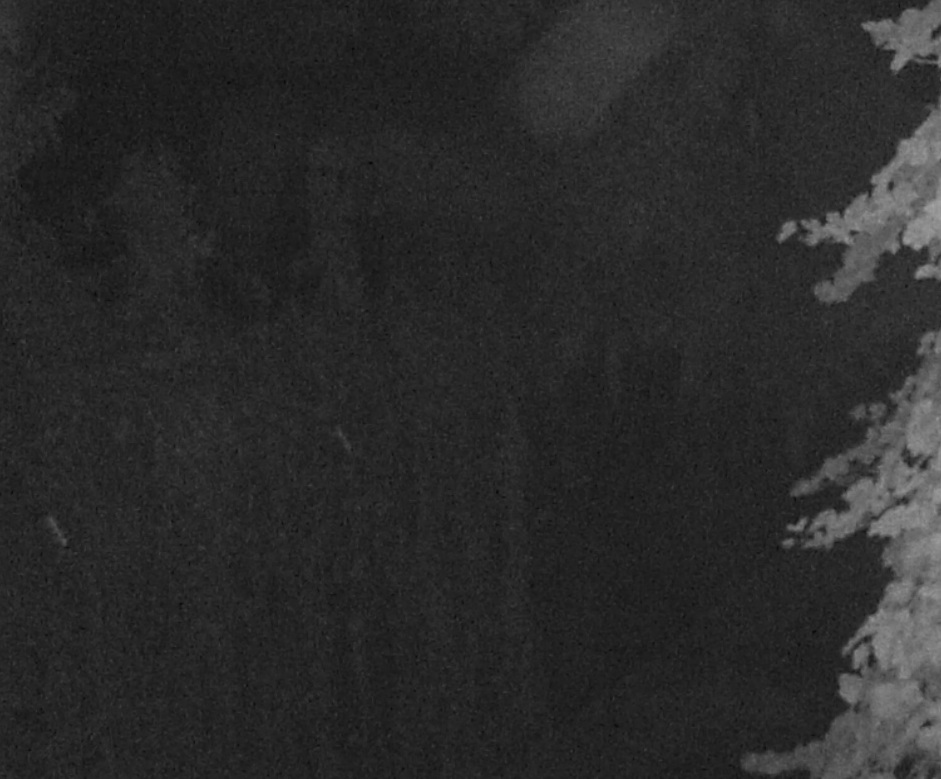
The blur at the top of photo is probably not a bat, for it is too indistinct and floats to the left in subsequent photos over the next 0.4 seconds (I now believe it is a dust particle). I believe that the two tiny rods are insects, but the apparent orientation of the blur (seeming to fly toward the insects) is coincidental. I admit my mistake in my original interpretation of the above photo, but the investigation continues.
The long vertical objects on the left of the frame are vines growing on the east wall, down into the channel, similar to the vines on the right. At the bottom, the union of the east wall and channel floor shows channel direction (lower left to upper right).
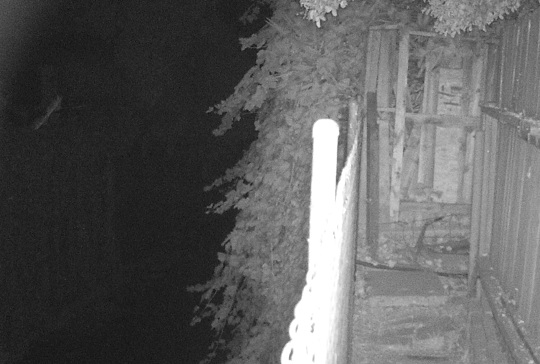
The long object on the left of the above IR-night photo might be interpreted as a flying insect close to the camera lens. The problem with that interpretation is that the light reflected from the strange object is similar in intensity to the light reflected from the vines in the middle of the frame, which are over thirty feet away from the camera. An insect close enough to make that large of an image would have had to have been much closer, and therefore should have been brighter than the leaves of those vines. In addition, a closer look at this long object shows no evidence of insect wing-flapping, at least from what I have seen.
The above image I processed in three small places:
- apparent left ear of the apparent bat
- apparent right ear
- apparent leading edge of the right wing
(To see more detail, click on this photo and then click again on the left side, getting a second magnification.)
I greatly increased both contrast and lightening to those three small parts of the photo, so my own bat-head interpretation may have introduced a bias in this processed image. I know that the body of the apparent bat appears too long, but what else could this object be?
Do Pterodactyls eat Bats?
Of course, none of the above is evidence that “pterodactyls” (pterosaurs) prey upon bats in Lakewood, California. The general concept that modern pterosaurs prey upon bats is found in other locations and is still circumstantial. A ropen flying at night through a storm channel in Los Angeles County might be chasing after a rat or baby possum when it flies right past a bat. But we need to keep an open mind to whatever we find in future game-camera photos and future security video recordings.
Do Pterosaurs Really Live in Los Angeles County?
During my teenaged years in Pasadena, when I enjoyed watching small bats at night, my younger sister had a friend, Dianne. She told my sister about the big “pterodactyl” she had seen flying around the mountains north of Pasadena. I don’t offer that as evidence that pterosaurs eat bats, but as evidence for the following: The more people talk about reports of living pterosaurs, the more additional eyewitness accounts come to light, and the more likely that people will share their own encounters. Some of those encounters have been in Los Angeles County.
Modern Pterosaur in California
. . . she remembered something that happened at night, about a year earlier. She saw something fly through the storm canal, and she heard the dogs barking, one after another, as the creature must have been flying past the backyards . . .
Lakewood, California, Flying Predator
An apparent ropen was seen by a 38-year-old lady in her backyard, in Lakewood, California, on June 19, 2012, at about noon. She at first estimated the wingspan . . . at least six feet. The tail was long, perhaps four feet long, and the end of the tail had a triangular appearance that caused the lady to think “dragon.”

